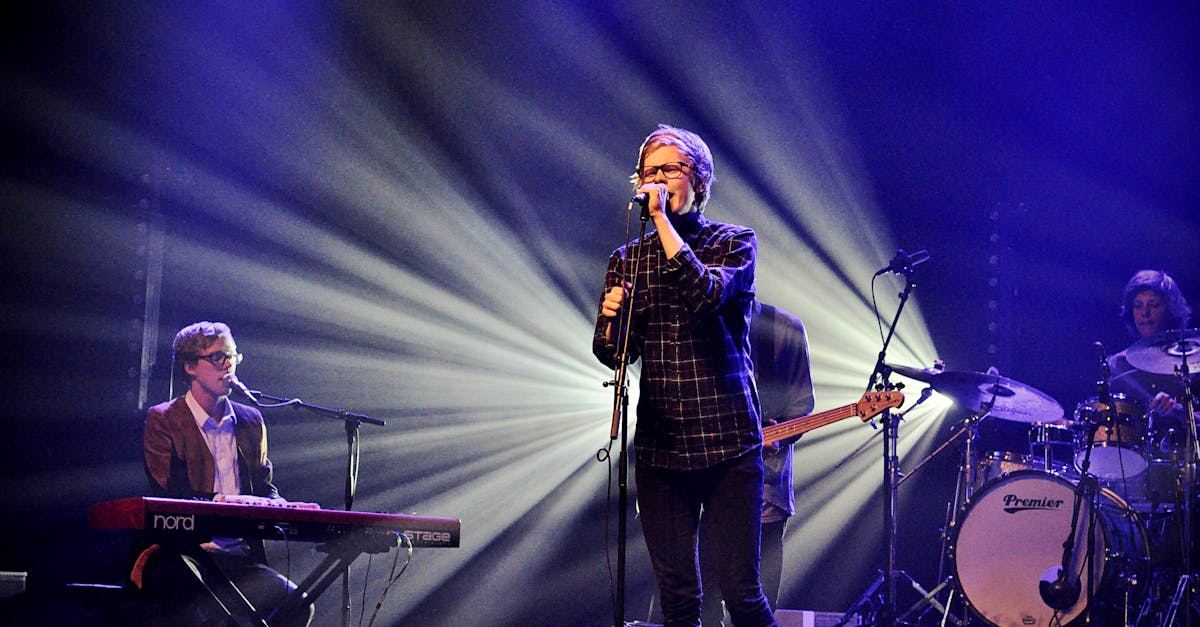City Vibes Soundscape Tales
Introduction
In the heart of urban landscapes, where the hustle and bustle of daily life are integral, lie the unique soundscapes that define city living. These soundscapes capture the vibrancy, chaos, and harmony that breathe life into urban environments. As people navigate through pavements strewn with footfalls and traffic, the sounds envelop them, sculpting their urban experiences. From the melodic honk of horns to the distant chatter at sidewalk cafes, each note forms a part of an authentic city vibe. Soundscapes tell tales rooted in culture, history, and the ever-evolving life pulse of cities. They guide the ears and the soul through a city’s auditory stories.
Advertisement
The Magic of Urban Soundscapes
Urban environments are bustling tapestries of sound, woven from diverse sources. These soundscapes are more than mere noise; they are auditory experiences reflecting a city's essence. In Tokyo, the harmonious blend of automated announcements and chaotically consistent car horns creates a unique sound identity. Similarly, New York City thrives on the cacophony of conversations threading through its streets, punctuated by the harmonious trill of subway trains. These intrinsic sound elements define cities and transport locals and travelers alike into the rhythmic pulse of urban life.
Advertisement
Culture Reflected in Sound
City soundscapes are deeply embedded in the cultural fabric of a place, speaking volumes about its traditions and social narratives. In an Italian piazza, the sound of clinking cups and lively debate paints a picture of communal interaction and culinary celebration. In contrast, the evening calls to prayer in Istanbul echo spiritual devotion, resonating with tradition and community. Exploring these auditory landscapes allows listeners to appreciate the profound intersection of sound and culture, offering an immersive understanding of a city's identity.
Advertisement
The Emotional Impact of Sound
Soundscapes evoke emotions, shaping how we perceive the environments we inhabit. The soothing rhythm of ocean waves in coastal cities like San Francisco can create a serene backdrop, inviting relaxation. Conversely, the relentless sirens and bustling streets of megacities like Mumbai may induce urgency and high energy. The sonic environment molds our experiences and emotions, influencing our stress levels, memories, and perceptions. It becomes essential to acknowledge and understand how these sounds impact our mental and emotional well-being.
Advertisement
Sound as a Historical Record
Unlike visual landmarks, soundscapes possess the unique ability to encapsulate the fleeting moments of history. In historic cities like Rome, the echoed chants of ancient celebrations intertwine with the resonant clang of modern-day construction, blurring temporal boundaries. These sounds preserve historical legacies and connect present generations with their past. They serve as audible bridges across time, allowing individuals to experience the rich heritage and changes that cities undergo.
Advertisement
The Role of Architecture and Space
Architecture plays a pivotal role in crafting the auditory experiences within urban landscapes. Modern skyscrapers in cities like Chicago shape the way sounds bounce and travel, creating distinctive acoustic impressions. Meanwhile, the sprawling open spaces of parks and plazas offer peaceful refuges within the auditory turmoil of cities, fostering serenity and reflection. The design and spatial organization of a city directly influence its soundscape, with sound emerging as an interplay of constructed environments and their inhabitants.
Advertisement
Soundscape Conservation
With the accelerating urban growth and technological advancements, preserving city soundscapes has become a concern for urban developers. Initiatives focused on sound mapping and acoustic ecology are emerging as valuable tools for conserving iconic sound environments. In Seattle, dedicated efforts to document local sounds aim to preserve the city's sonic identity amidst urbanization. Recognizing sound as a cultural and environmental resource advocates for balanced urban planning that respects these auditory inheritances for future generations.
Advertisement
Challenges of Sound Pollution
Amidst the beauty of city soundscapes, the adverse effects of noise pollution demand attention. Excessive noise disrupts daily life, impacting both physical and mental health on a grand scale. Cities like Delhi face increasing noise from industrial activities and transportation, affecting quality of life. Urban planners strive to mitigate these challenges by implementing sound barriers and promoting green spaces. Addressing noise pollution is imperative to curating future urban experiences that nurture peaceful coexistence alongside vibrant soundscapes.
Advertisement
Engaging with Urban Sounds
Realizing the significance of sound in the urban experience unlocks the potential for innovative engagement with city soundscapes. Initiatives such as guided sound walks and auditory installations invite residents and tourists alike to explore a city through its unique sonic environment. Sound artists and musicians, inspired by the vibrant variety of sounds, incorporate these auditory textures into their works, thus immortalizing a city's sonic signature through art. These engagements enrich not only our connection with the city but also our appreciation for sound as an urban narrative tool.
Advertisement
Conclusion
City soundscapes are more than auditory backdrops; they are vibrant narratives that shape urban identity. From cultural expressions to emotional reflections, these sounds encapsulate the essence of a city's spirit and history. Understanding and preserving these soundscapes allow us to embrace their unique stories, ensuring they endure amidst evolving urban landscapes. As we delve deeper into these intricate soundscapes, they remind us of the synergy between sound, place, and human experience. Embracing this connection enriches our appreciation of cities and their extraordinary tales told through sound.
Advertisement








